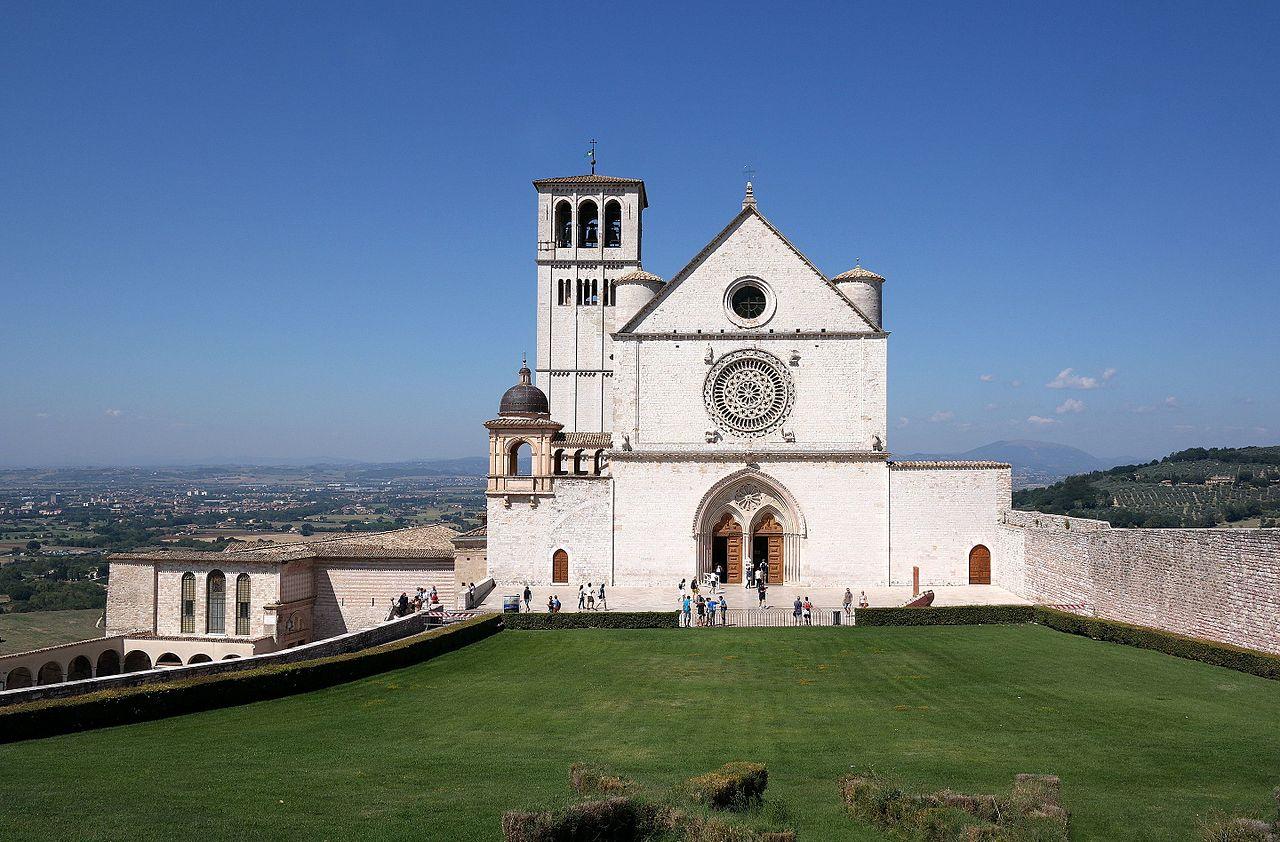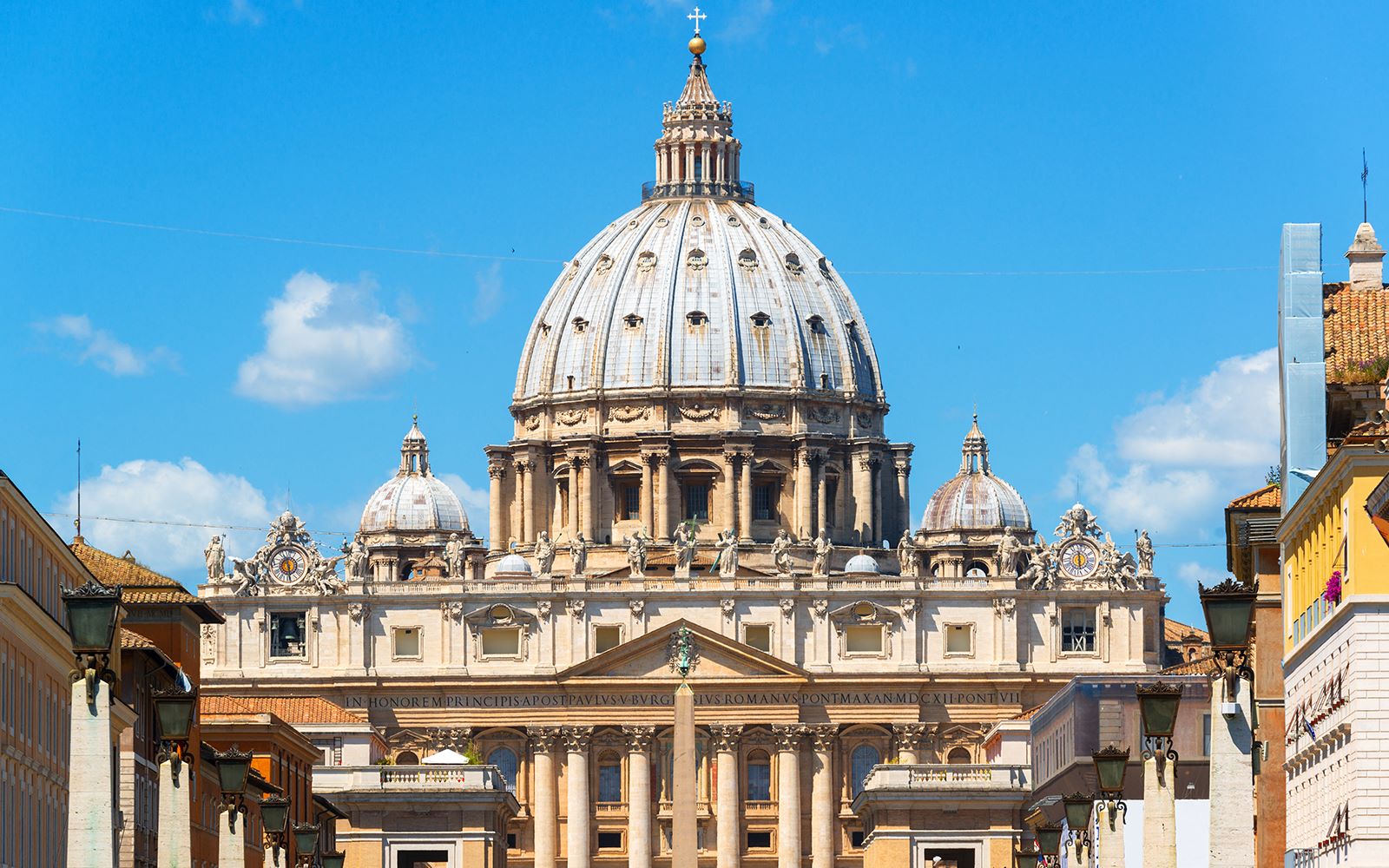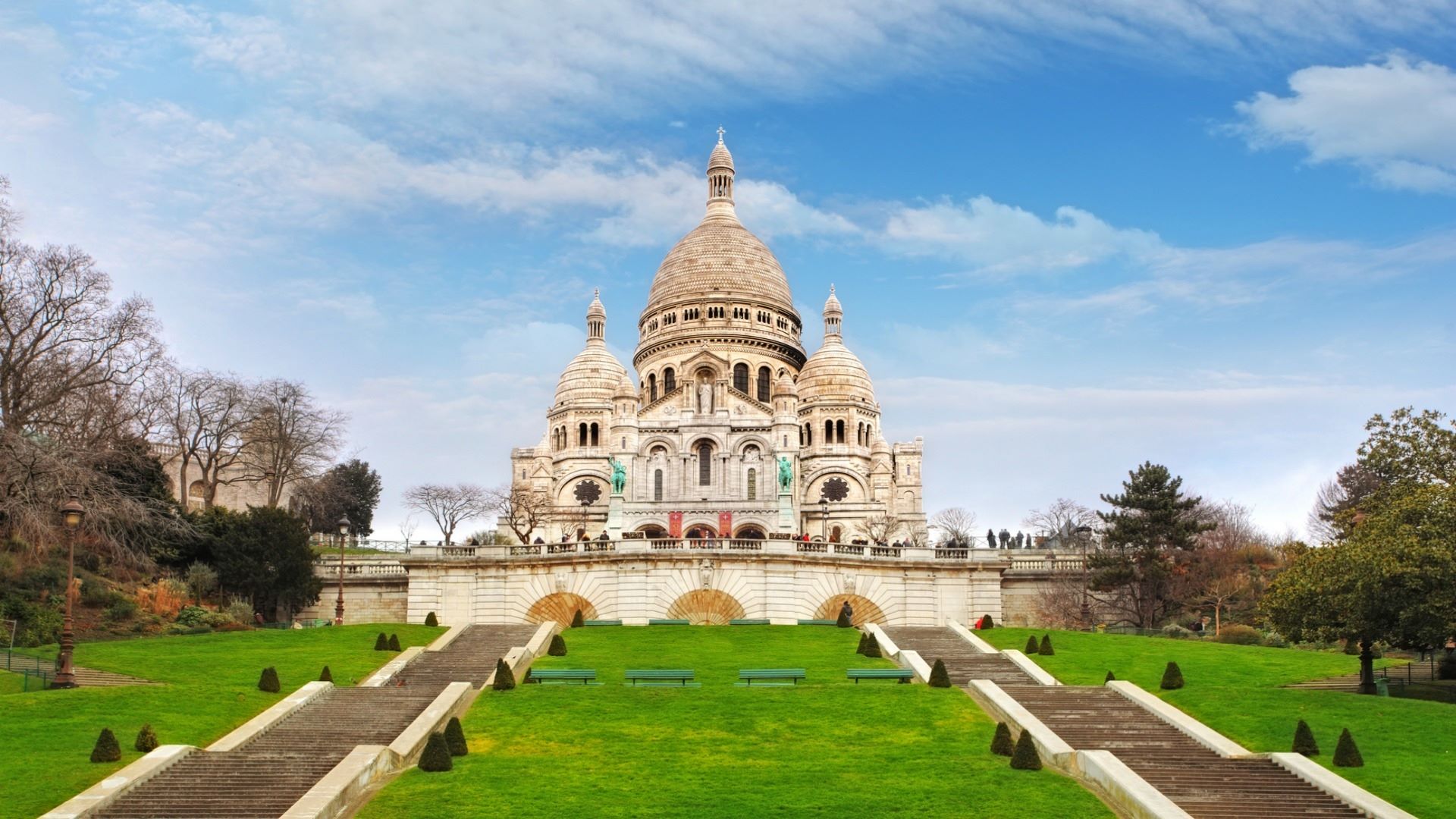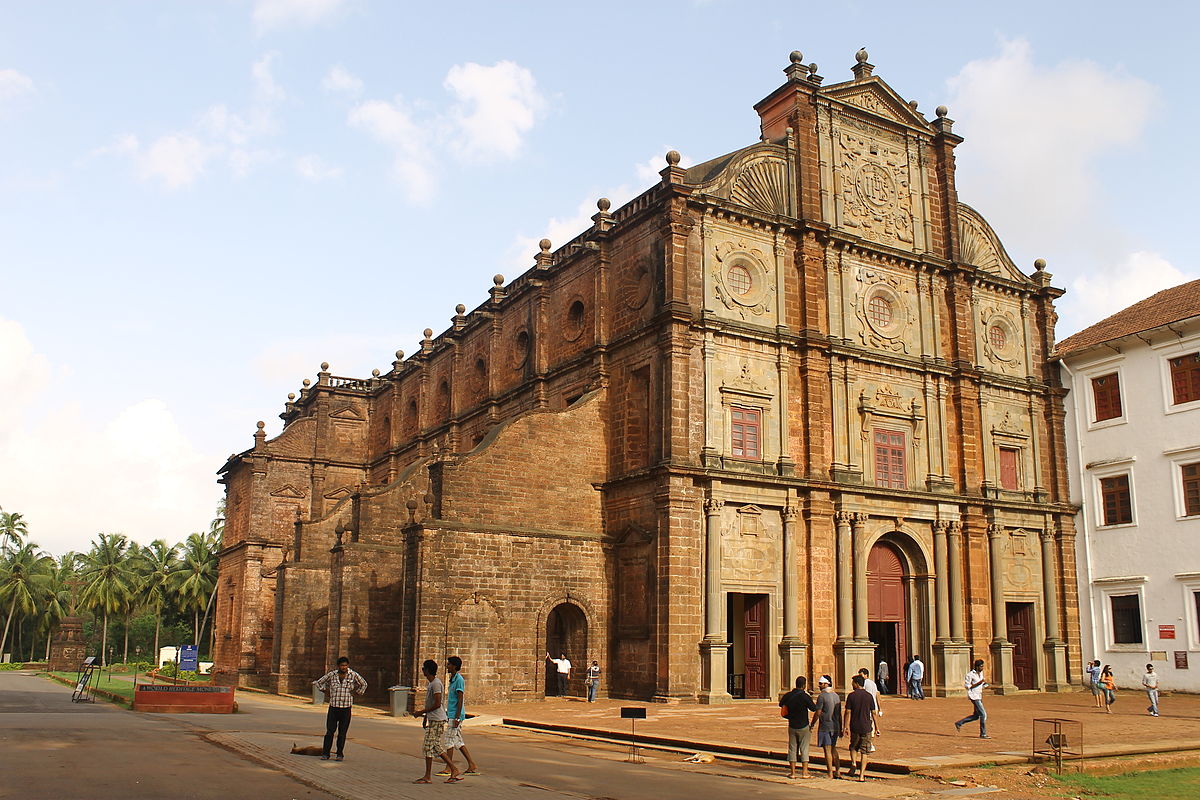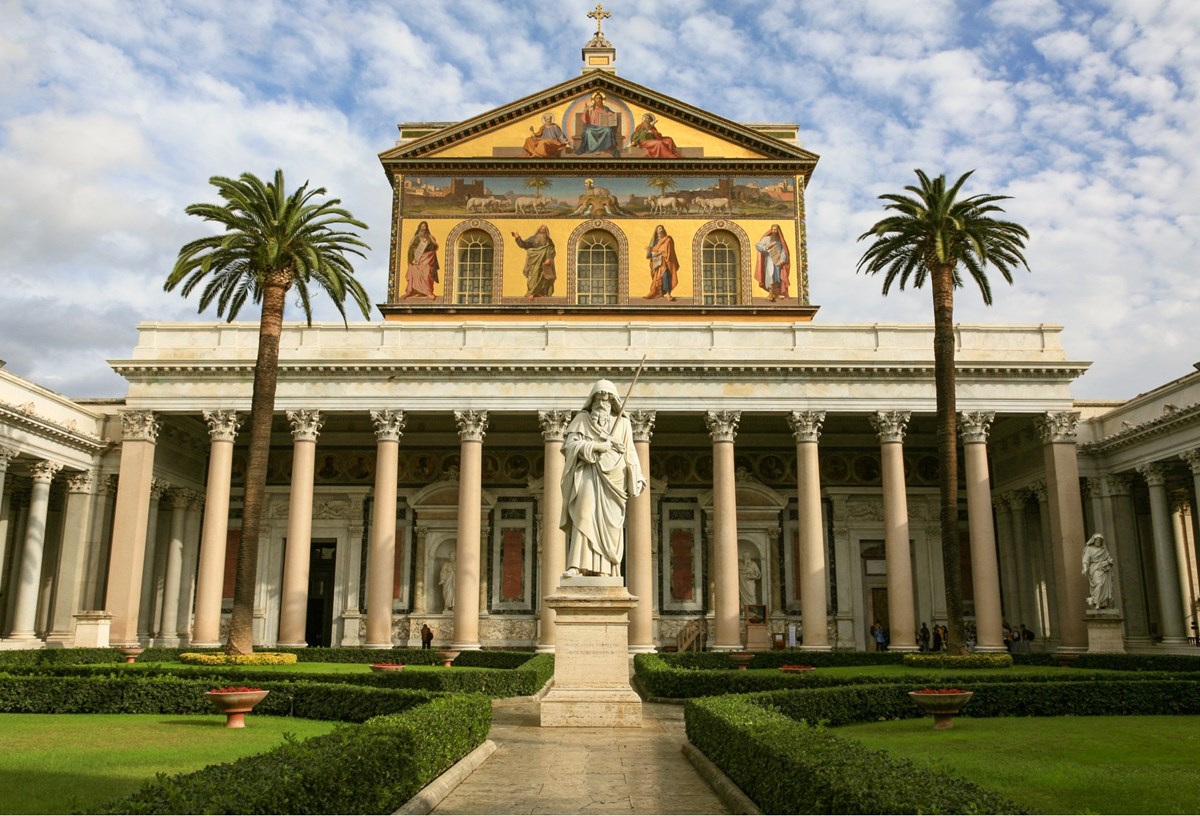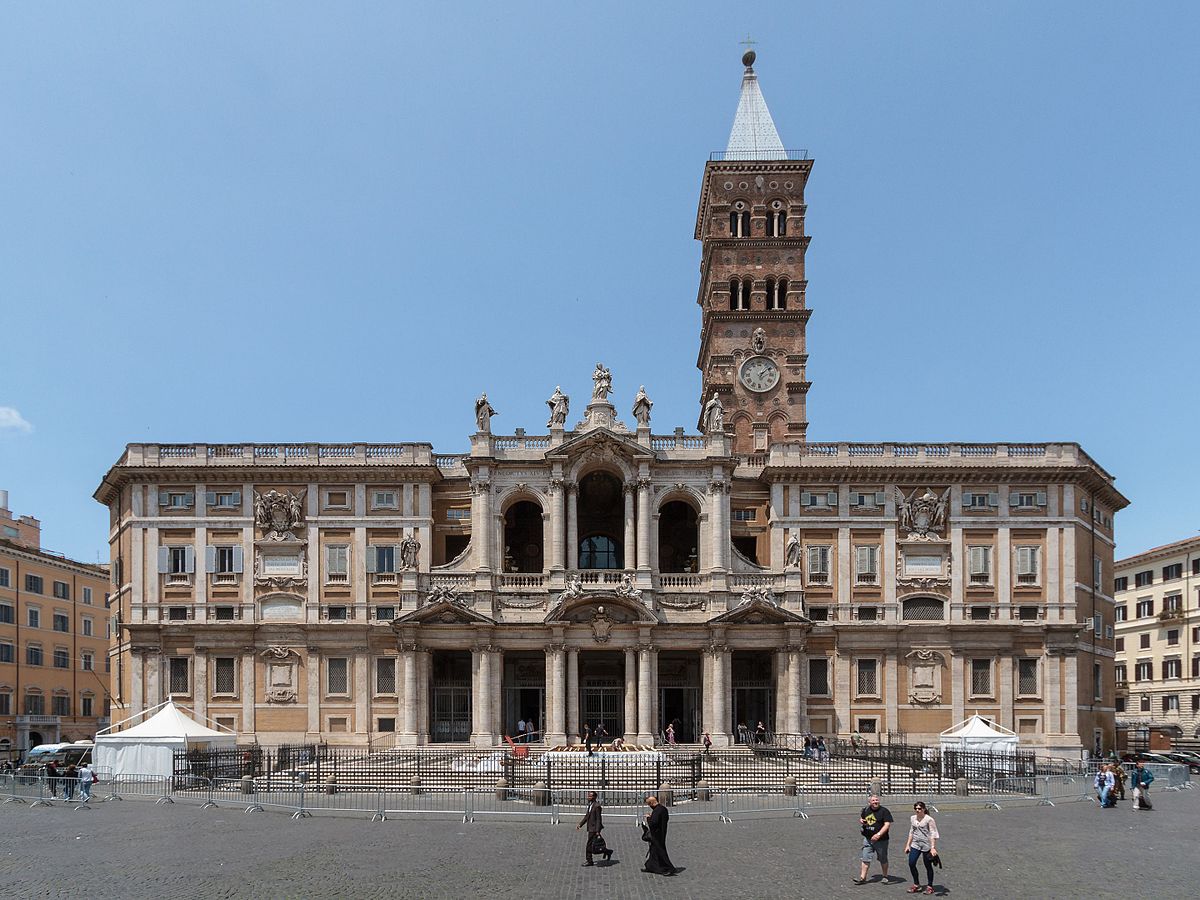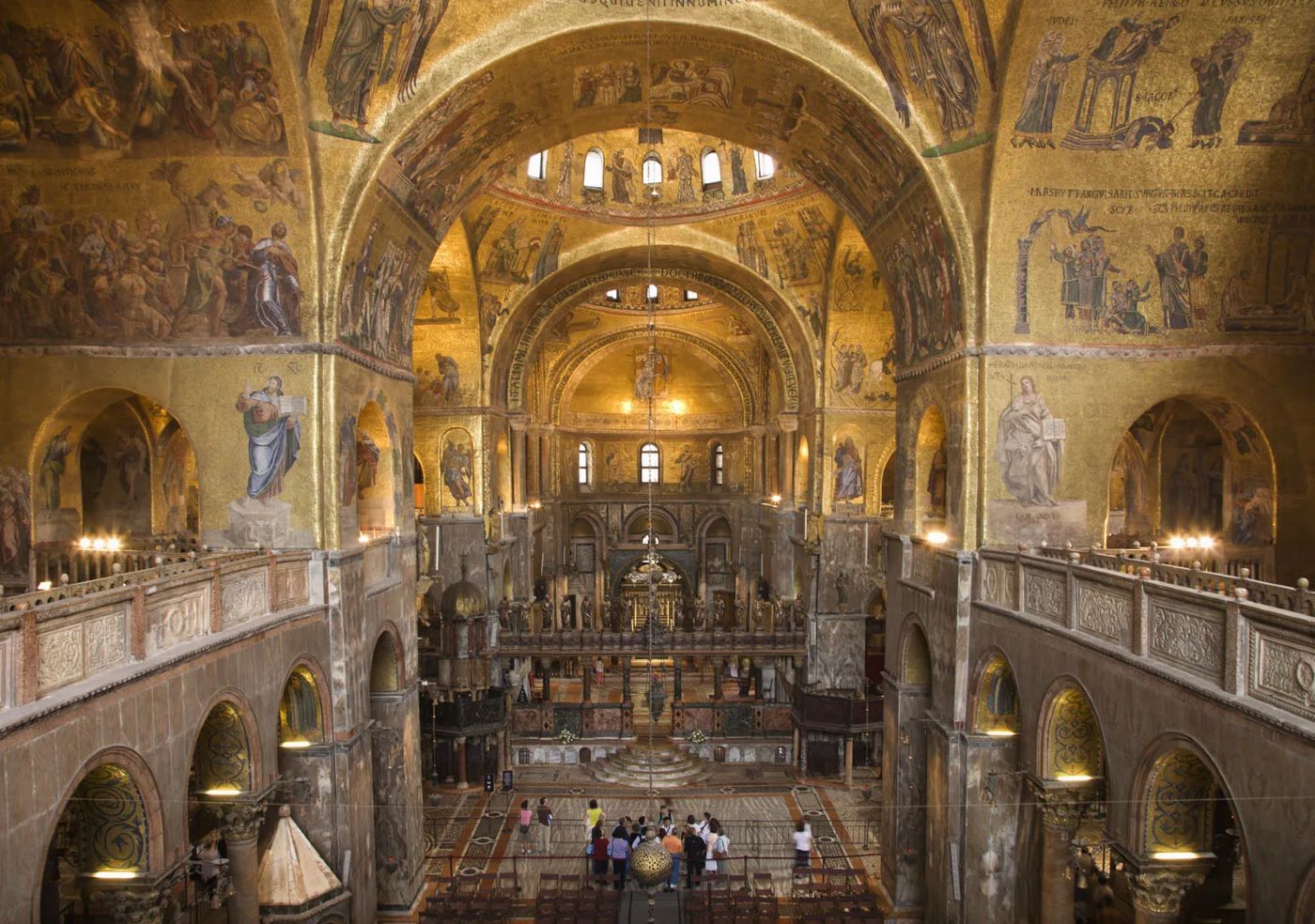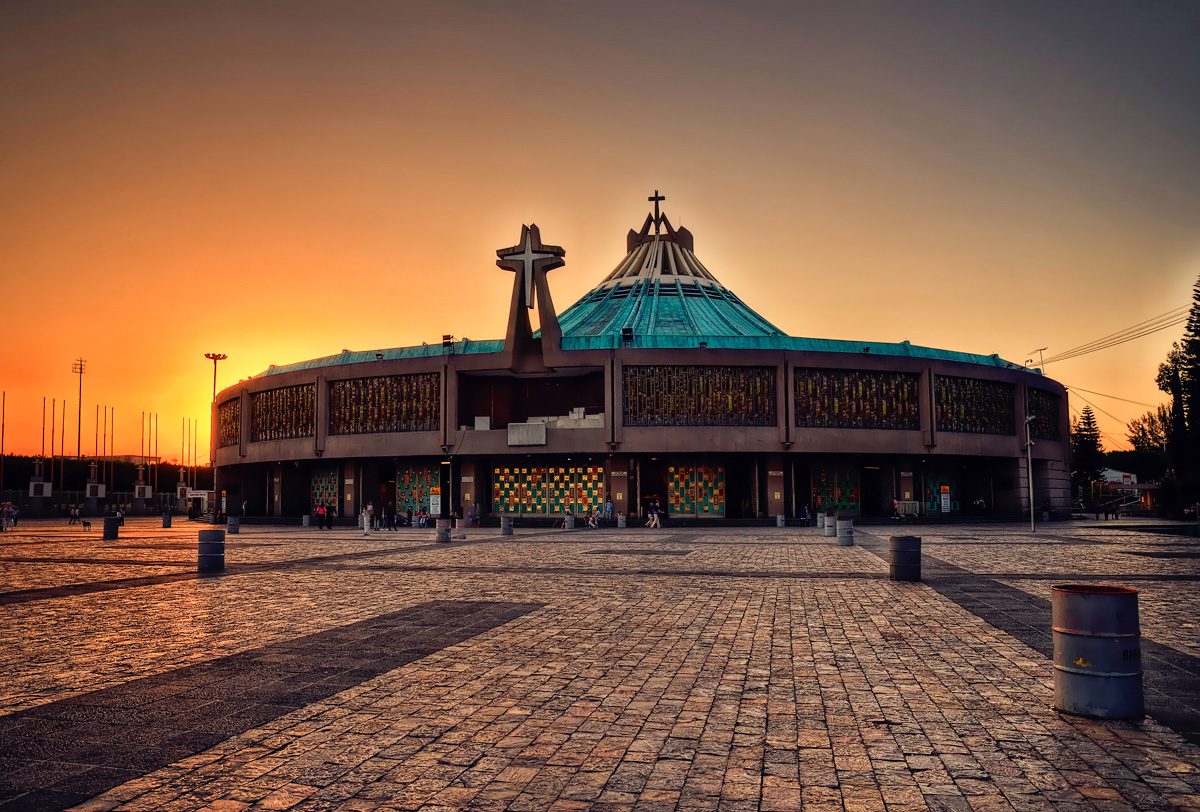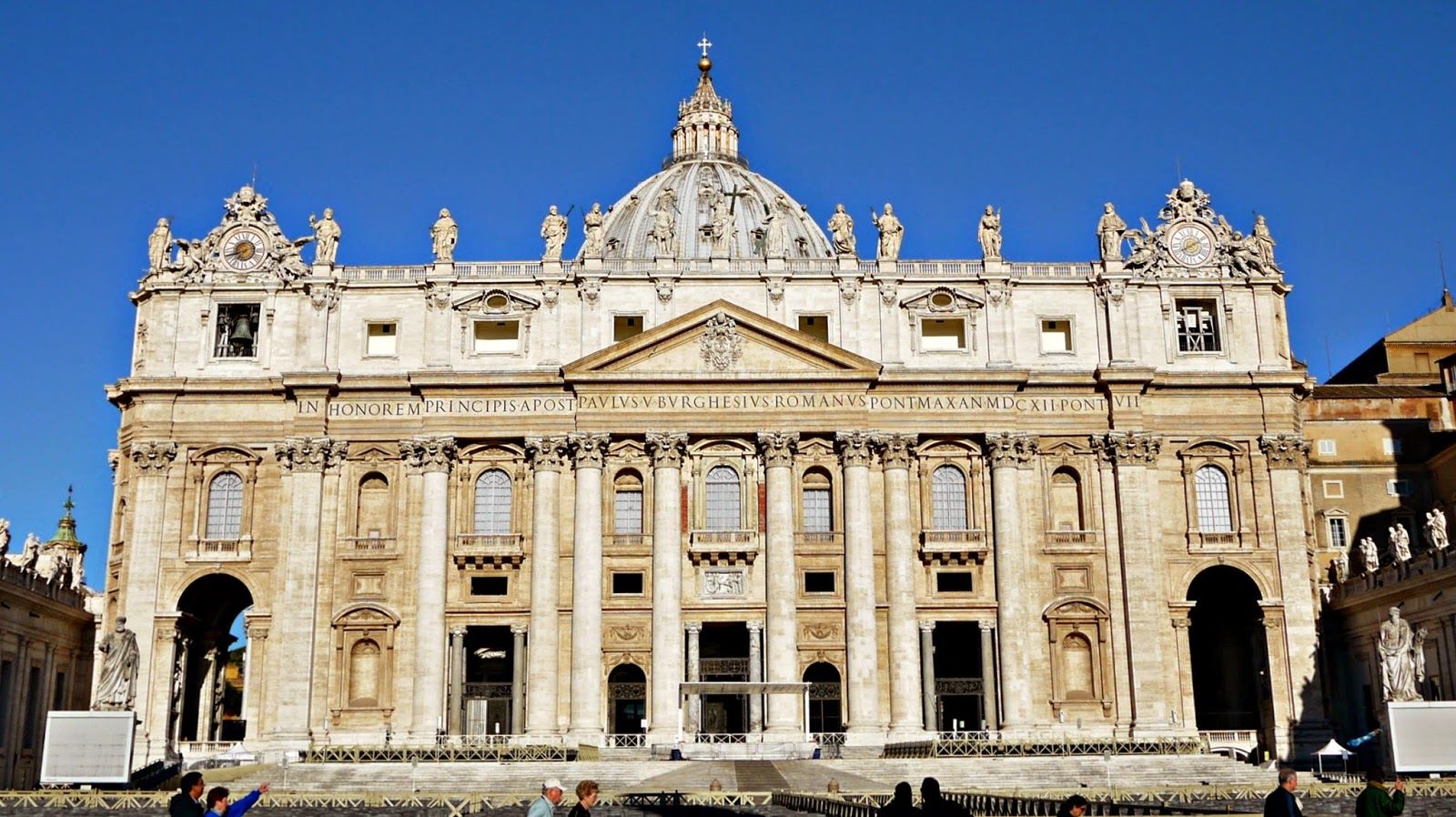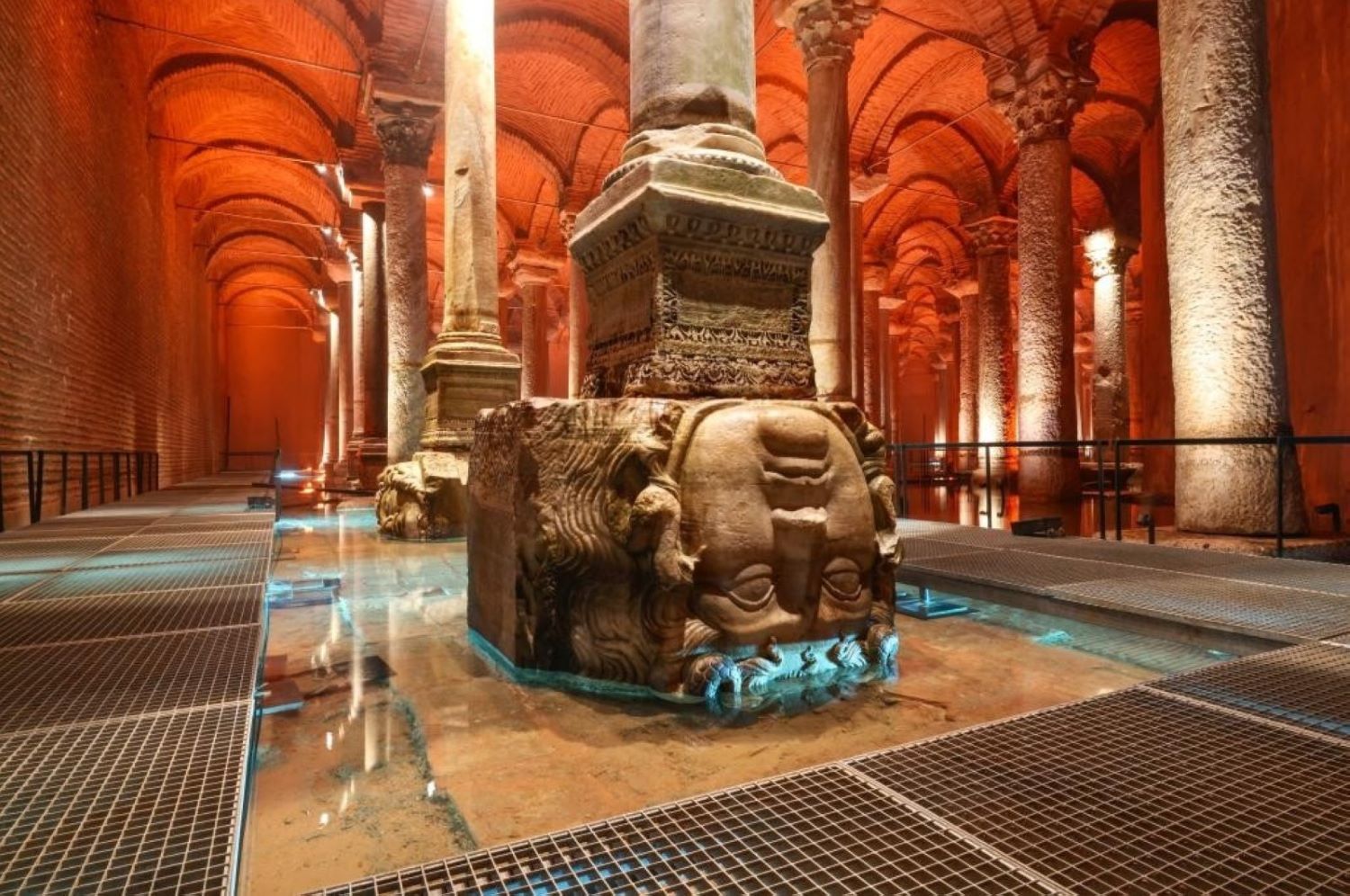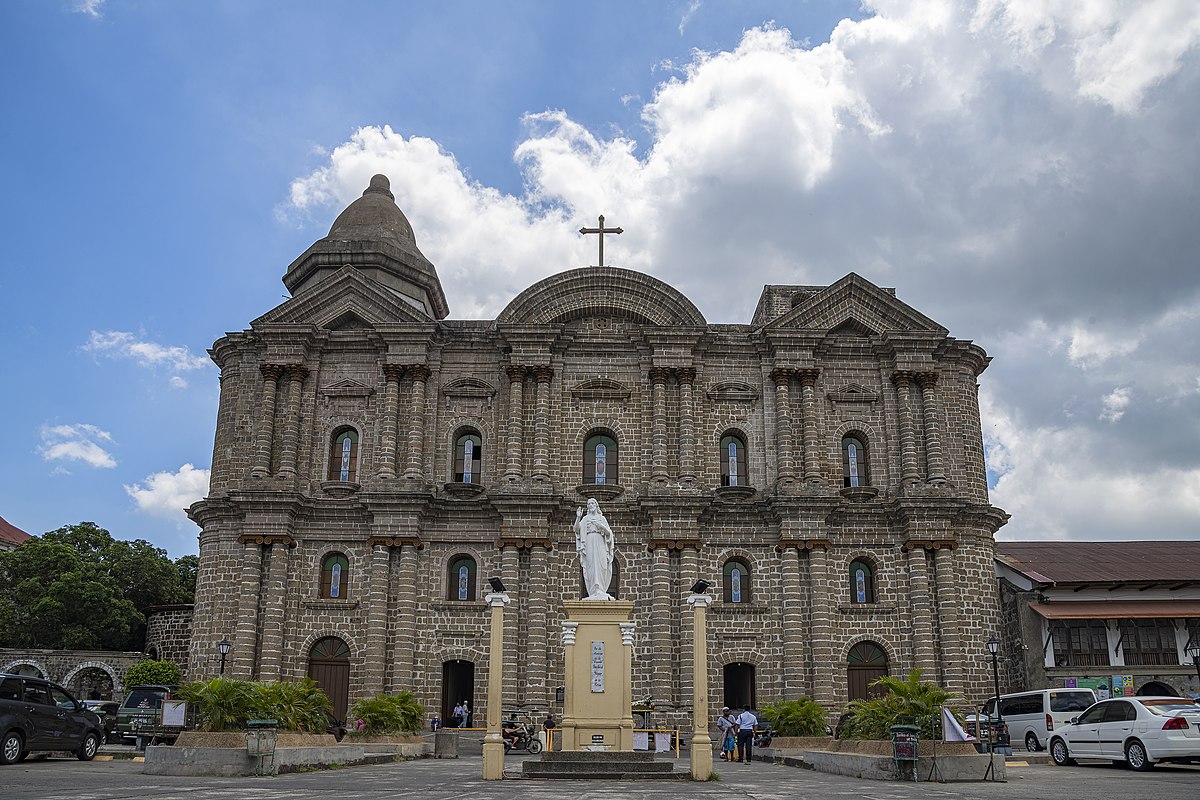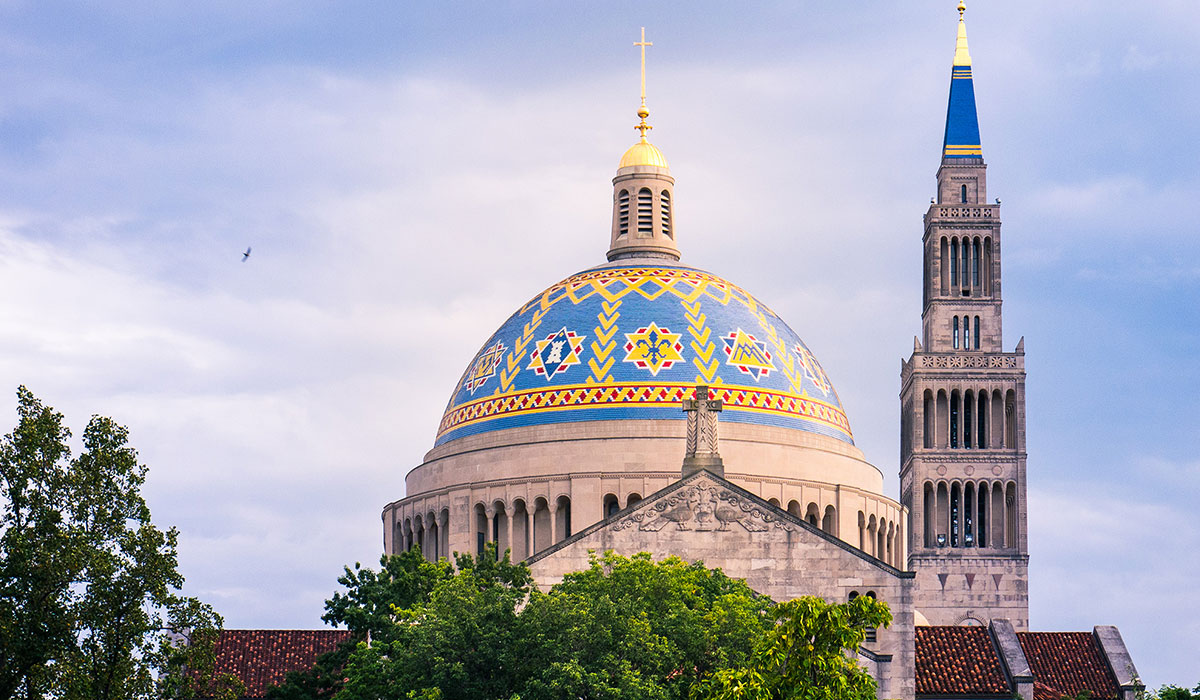Home>Arts and Culture>Where Is The Basilica Of The Annunciation
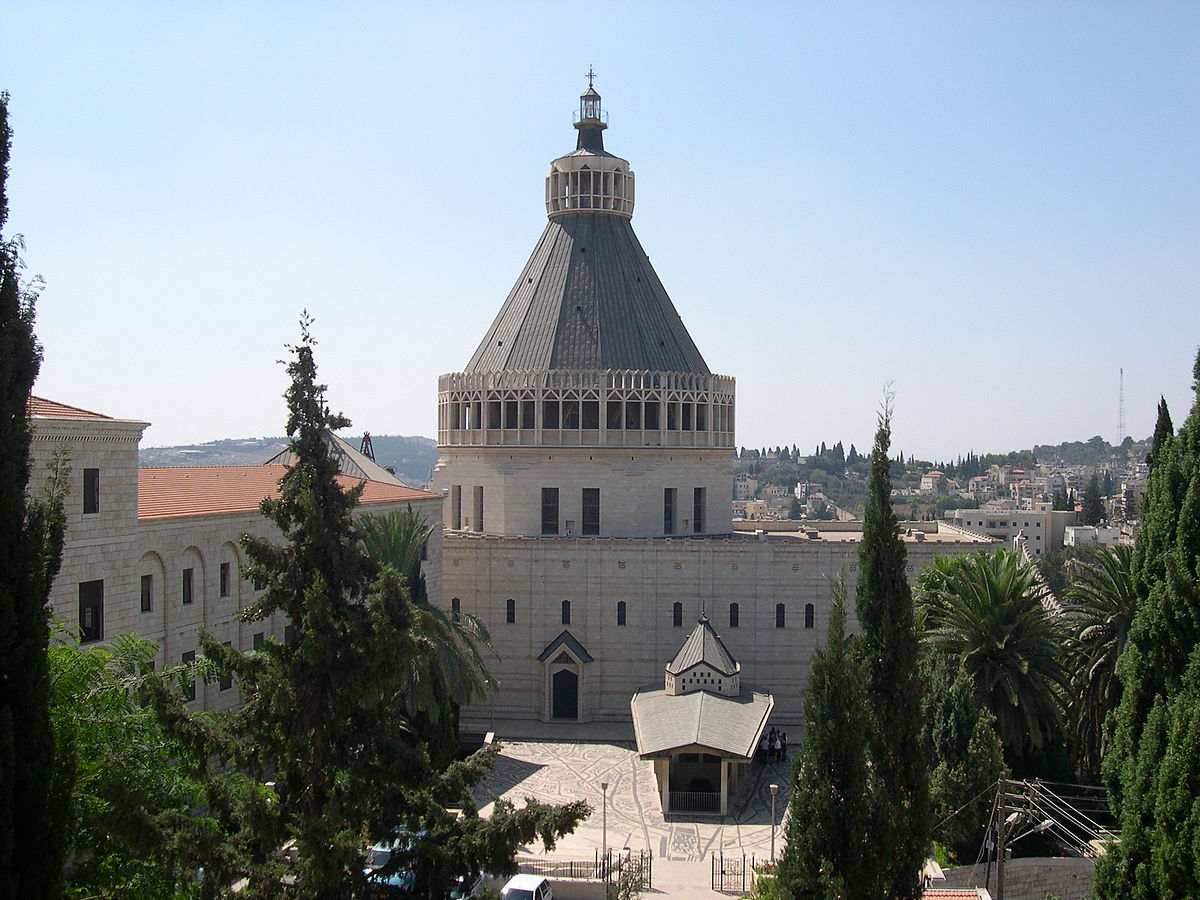

Arts and Culture
Where Is The Basilica Of The Annunciation
Published: February 11, 2024
Ericka Andersen, an editor at Christian.net, expertly merges digital strategy with content creation, focusing on faith and societal issues. Her communication skills enhance the platform's engaging narratives, fostering meaningful dialogue on belief's impact on society.
Discover the rich arts and culture at the Basilica of the Annunciation, a renowned religious site in Nazareth. Explore its historical significance and artistic treasures.
(Many of the links in this article redirect to a specific reviewed product. Your purchase of these products through affiliate links helps to generate commission for Christian.net, at no extra cost. Learn more)
Table of Contents
Introduction
The Basilica of the Annunciation is a revered religious site located in the city of Nazareth, Israel. This magnificent basilica holds immense significance for Christians worldwide, as it is believed to be the place where the Angel Gabriel appeared to the Virgin Mary, announcing that she would conceive and give birth to Jesus, the Son of God. This pivotal moment, known as the Annunciation, is a cornerstone of Christian faith and is commemorated with profound reverence at this sacred site.
The Basilica of the Annunciation stands as a testament to the enduring spiritual legacy of the Annunciation, drawing pilgrims and visitors from all corners of the globe. Its historical and architectural grandeur, coupled with its profound religious significance, makes it a compelling destination for those seeking to deepen their understanding of Christian history and faith.
As we delve into the rich history, architectural splendor, and spiritual significance of the Basilica of the Annunciation, we will uncover the profound impact of this revered site on the hearts and minds of believers and history enthusiasts alike. Join us on a journey through time and faith as we explore the captivating allure of this iconic basilica.
Read more: Where Is The Lateran Basilica
History of the Basilica of the Annunciation
The history of the Basilica of the Annunciation is deeply intertwined with the rich tapestry of Christian heritage and the enduring legacy of the Annunciation. The origins of this sacred site can be traced back to the early Christian era, with the belief that it stands upon the very place where the Angel Gabriel appeared to Mary, delivering the divine message that would forever alter the course of human history.
The earliest known structure on this hallowed ground dates back to the Byzantine period, when a small church was erected to commemorate the Annunciation. Over the centuries, the site underwent various transformations and renovations, reflecting the evolving architectural styles and religious practices of the times. However, it was not until the 20th century that the grandeur and significance of the modern-day Basilica of the Annunciation began to take shape.
In 1969, the striking modern basilica that stands today was consecrated, embodying the culmination of centuries of veneration and reverence for the Annunciation. Designed by the renowned Italian architect Giovanni Muzio, the basilica's architectural marvel is a harmonious blend of contemporary aesthetics and timeless spiritual symbolism. Its soaring dome and elegant colonnades beckon visitors to step into a realm where history, faith, and art converge in a breathtaking display of devotion.
The basilica's interior is adorned with a wealth of artistic treasures, including striking mosaics gifted by Catholic communities from around the world. These intricate mosaics depict the Virgin Mary in various cultural interpretations, underscoring the universal reverence for her pivotal role in the Christian narrative. The lower level of the basilica houses the Grotto of the Annunciation, believed to be the actual site of Mary's humble abode, where the divine message was delivered.
As a testament to its enduring significance, the Basilica of the Annunciation has become a beacon of faith and pilgrimage, drawing countless believers and seekers to its sacred precincts. Its profound historical roots and architectural splendor stand as a testament to the enduring power of the Annunciation, inviting visitors to partake in a timeless journey of spiritual contemplation and awe-inspiring wonder.
Architectural Features
The Basilica of the Annunciation stands as a resplendent testament to the harmonious fusion of modern architectural grandeur and timeless spiritual symbolism. Designed by the esteemed Italian architect Giovanni Muzio, the basilica's striking facade and awe-inspiring interior beckon visitors to embark on a captivating visual and spiritual journey.
The basilica's exterior is a captivating blend of geometric precision and graceful elegance. Its soaring dome, adorned with delicate mosaics, serves as a celestial crown atop the structure, symbolizing the divine significance of the Annunciation. The facade, adorned with intricate bas-reliefs and ornate detailing, exudes a sense of reverence and grandeur, inviting visitors to step into a realm where history and faith converge in a breathtaking display of devotion.
Upon entering the basilica, visitors are greeted by a sanctuary of serenity and splendor. The interior is adorned with a wealth of artistic treasures, including vibrant mosaics that adorn the walls and ceilings. These exquisite mosaics, gifted by Catholic communities from around the world, depict the Virgin Mary in various cultural interpretations, underscoring the universal reverence for her pivotal role in the Christian narrative.
The lower level of the basilica houses the Grotto of the Annunciation, a sacred space believed to be the actual site of Mary's humble abode, where the divine message was delivered. This subterranean sanctuary exudes an aura of profound spirituality, inviting pilgrims and visitors to engage in quiet contemplation and reverence.
The architectural layout of the basilica is designed to evoke a sense of sacred harmony and contemplation. The interplay of light and space within the structure creates an atmosphere of ethereal tranquility, fostering a profound connection to the spiritual significance of the Annunciation.
In essence, the architectural features of the Basilica of the Annunciation serve as a testament to the enduring power of faith and artistic expression. Its captivating design and spiritual resonance beckon visitors to immerse themselves in a realm where the divine and the human converge in a transcendent symphony of beauty and devotion.
Significance to Christianity
The Basilica of the Annunciation holds profound significance within the tapestry of Christian faith, serving as a poignant testament to the pivotal moment of the Annunciation, which stands at the core of Christian theology. This revered site is deeply intertwined with the narrative of the Virgin Mary and the incarnation of Jesus, embodying the essence of divine intervention and human salvation.
For Christians, the Annunciation represents the divine proclamation of the impending birth of Jesus, the Son of God, to the Virgin Mary. This sacred event, as recounted in the Gospel of Luke, marks the inception of the Incarnation, signifying the embodiment of God's grace and love in human form. The Basilica of the Annunciation stands as a tangible link to this transformative moment, evoking profound reverence and awe among believers.
The significance of this site extends beyond its historical and biblical implications. It serves as a focal point for devotion and contemplation, inviting pilgrims and visitors to immerse themselves in the spiritual resonance of the Annunciation. The basilica's architectural grandeur and artistic adornments further amplify its significance, offering a visual and sensory journey that deepens the understanding of the divine mystery enshrined within its walls.
Moreover, the Basilica of the Annunciation embodies the universal veneration of the Virgin Mary, who holds a revered place in Christian theology as the Mother of Jesus. The site's portrayal of Mary in diverse cultural interpretations through its vibrant mosaics underscores her unifying presence across global Christian traditions, fostering a sense of inclusivity and shared devotion among believers.
In essence, the Basilica of the Annunciation stands as a sacred nexus where the divine and the human converge, encapsulating the profound significance of the Annunciation in the Christian narrative. Its enduring impact on the faithful transcends time and borders, beckoning believers to partake in a spiritual pilgrimage that resonates with the essence of Christian faith and the enduring legacy of the Annunciation.
Location and Directions
The Basilica of the Annunciation is situated in the heart of the historic city of Nazareth, Israel. Nestled amidst the timeless landscapes of the Galilee region, this revered site draws pilgrims and visitors from around the world, seeking to immerse themselves in the sacred aura of the Annunciation.
Located at Casa Nova Street in Nazareth, the basilica stands as a beacon of spiritual devotion and architectural splendor. Its central position within the city allows for convenient access, making it a prominent landmark within the local landscape. The surrounding area is steeped in rich historical and cultural significance, offering visitors a multifaceted experience that transcends the boundaries of time and tradition.
For those traveling to the Basilica of the Annunciation, various transportation options are available. The city of Nazareth is well-connected by road networks, allowing for easy access by car or bus. Additionally, the site is within walking distance from the city center, enabling visitors to embark on a leisurely stroll through the charming streets of Nazareth as they make their way to the basilica.
Upon arrival, visitors are greeted by the imposing facade of the basilica, which serves as a visual testament to the enduring legacy of the Annunciation. The surrounding area exudes a sense of tranquility and reverence, creating an atmosphere conducive to spiritual contemplation and awe-inspiring discovery.
The basilica's central location within Nazareth makes it a focal point for pilgrims and tourists alike, offering a seamless blend of accessibility and profound spiritual significance. Whether arriving from nearby locales or distant lands, the journey to the Basilica of the Annunciation is imbued with a sense of anticipation and reverence, culminating in an encounter with a site that stands as a timeless testament to faith and history.
In essence, the location and directions to the Basilica of the Annunciation invite visitors to embark on a journey that transcends geographical coordinates, beckoning them to partake in a pilgrimage of the spirit and the senses. As the basilica stands as a revered landmark within the ancient city of Nazareth, its accessibility and central position serve as an invitation to all who seek to immerse themselves in the profound legacy of the Annunciation.
Read more: Where Is The Basilica Of The Sacred Heart
Visiting Hours and Admission
The Basilica of the Annunciation welcomes visitors to partake in its timeless aura of spirituality and architectural grandeur during designated visiting hours. Whether embarking on a pilgrimage of faith or seeking to immerse oneself in the historical and cultural significance of this revered site, the basilica offers a window of opportunity for exploration and contemplation.
Visiting hours at the basilica are structured to accommodate the diverse needs of pilgrims and tourists, ensuring that all who seek to experience its profound resonance have the opportunity to do so. The basilica typically opens its doors to visitors during the morning hours, allowing for a serene and unhurried exploration of its sacred precincts. The gentle light filtering through the stained glass windows and the hushed ambiance create an atmosphere conducive to quiet reflection and spiritual reverence.
As the day unfolds, the basilica continues to welcome visitors, offering a sanctuary of tranquility and historical significance. The midday hours provide an ideal window for those seeking to engage in unhurried contemplation and appreciation of the basilica's architectural splendor. The interplay of light and shadow within the structure evokes a sense of timelessness, inviting visitors to immerse themselves in the enduring legacy of the Annunciation.
In the afternoon, the basilica remains open, allowing pilgrims and tourists to extend their exploration of this sacred site. The shifting hues of daylight cast a mesmerizing glow upon the mosaics and architectural details, creating a visual tapestry that resonates with the spirit of the Annunciation. This period offers an opportunity for visitors to engage in unhurried observation and introspection, fostering a deeper connection to the basilica's profound significance.
In terms of admission, the Basilica of the Annunciation typically offers free entry to visitors, embracing the spirit of inclusivity and accessibility. This approach reflects the basilica's commitment to welcoming all who seek to partake in its spiritual resonance, regardless of background or means. The absence of admission fees underscores the basilica's role as a beacon of spiritual devotion and historical significance, inviting visitors to immerse themselves in its timeless allure without financial barriers.
As visitors prepare to embark on their journey to the Basilica of the Annunciation, it is advisable to verify the specific visiting hours and admission details, as they may be subject to seasonal variations or special events. By doing so, pilgrims and tourists can ensure that their encounter with this revered site unfolds seamlessly, allowing for an immersive and enriching experience that transcends time and tradition.
In essence, the visiting hours and admission policies of the Basilica of the Annunciation are designed to facilitate a profound and accessible encounter with this iconic site. Whether arriving in the morning light, the tranquil midday hours, or the enchanting afternoon glow, visitors are invited to partake in a journey of spiritual contemplation and historical discovery that resonates with the enduring legacy of the Annunciation.
Nearby Attractions and Points of Interest
The vicinity surrounding the Basilica of the Annunciation is steeped in historical, cultural, and natural wonders, offering visitors a multifaceted tapestry of attractions and points of interest to explore. From ancient landmarks to vibrant marketplaces, the area surrounding the basilica beckons pilgrims and tourists to embark on a journey of discovery that transcends the boundaries of time and tradition.
One of the notable attractions in close proximity to the basilica is the St. Joseph's Church, a revered site that holds significance in Christian tradition. Believed to stand upon the site of Joseph's carpentry workshop, this historic church invites visitors to delve into the narrative of the Holy Family and the enduring legacy of Joseph, the earthly father of Jesus. The church's serene ambiance and architectural splendor offer a complementary experience to the spiritual resonance of the Basilica of the Annunciation.
For those seeking to immerse themselves in the vibrant tapestry of local culture, the bustling streets of Nazareth's Old City present a captivating array of marketplaces, artisanal shops, and culinary delights. The vibrant souks, or markets, offer a sensory feast of sights, sounds, and aromas, where visitors can peruse an eclectic array of handicrafts, spices, and traditional wares. The Old City's labyrinthine alleyways and historic landmarks provide a glimpse into the rich heritage and daily life of Nazareth, inviting visitors to engage with the city's living history.
Nature enthusiasts and contemplative souls will find solace in the serene landscapes of the Mount of Precipice, a prominent hill located just outside Nazareth. This picturesque vantage point offers panoramic views of the Galilean countryside, providing a tranquil setting for reflection and appreciation of the region's natural beauty. The Mount of Precipice holds biblical significance, as it is traditionally associated with the episode of the Rejection of Jesus, adding a layer of historical and spiritual depth to its scenic allure.
Additionally, the nearby Mary's Well, a revered site in Christian and Islamic traditions, serves as a focal point for pilgrims and visitors seeking to immerse themselves in the narrative of the Virgin Mary. The well's tranquil surroundings and historical resonance offer a contemplative space for spiritual introspection and appreciation of its cultural significance.
In essence, the area surrounding the Basilica of the Annunciation abounds with a rich tapestry of attractions and points of interest, inviting visitors to embark on a holistic journey that encompasses spiritual, cultural, and natural wonders. Whether exploring historic landmarks, engaging with local traditions, or communing with the region's natural splendor, the nearby attractions and points of interest offer a multifaceted experience that complements the profound resonance of the basilica.
